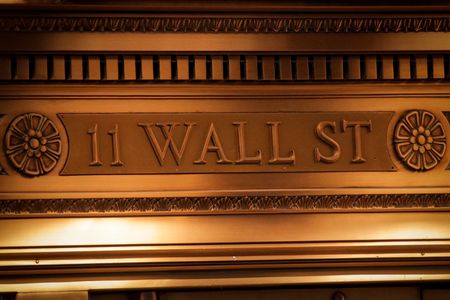A look at the day ahead in U.S. and global markets from Mike Dolan
There’s been little let up in this month’s U.S. bond burn and China continues to fall short of what markets think is needed to stabilise its economy – making for another nervy start to the financial week.
Although prompted by a deepening property sector bust and worrying economic activity undershoot, China’s latest widely expected interest rate cut on Monday was surprisingly small – underscoring concerns that official efforts to shore up the economic malaise are still just piecemeal.
The People’s Bank of China lowered its one-year lending rate by only 10 basis points to 3.45% – less than the 15bp cut forecast – and it left five-year rates unchanged.
The disappointment saw the yuan fall anew, with the dollar resuming its climb to last week’s 2023 highs against the offshore renminbi and benchmark stock and dropping more than 1% each to new lows for the year too.
The 10-year U.S.-China yield gap widened to another 16-year high.
Beijing’s latest stock market support measures announced on Friday appeared to have little impact and foreign investors on Monday sold almost a billion dollars worth of Chinese shares via the Stock Connect system – an 11th straight session of net selling.
Shares of major property developer Sunac China, meantime, fell as much as 13% after it flagged a 16 billion yuan ($2.19 billion) net loss for the first half – the latest jolt from the ongoing sector upheaval. Official figures also showed China’s government land sales revenue declined for the 19th consecutive month in July.
UBS became the latest global bank to slash China’s annual economic growth forecast for this year – down to 4.8% from 5.2%.
The backdrop is not great for China’s President Xi Jinping as he heads to South Africa for a summit of BRICS economies – including Brazil, Russia, India and the host nation – and with Russian President Vladimir Putin unable to attend due to an arrest warrant for war crimes committed during Russia’s invasion of Ukraine.
The other major world markets irritant of the moment also continued to irk on Monday, with 30-year U.S. Treasury yields hitting another 12-year high at 4.4430%.
While background suspicion of Chinese sales of Treasuries amid its ongoing support for the yuan, the biggest issue facing U.S. bonds is the unexpected strength of U.S. economic growth through July.
And the critical event of the week is the Federal Reserve’s annual Jackson Hole conference, where markets will be watching closely for clues about the Fed’s assumption about the trajectory of interest rates longer term and whether borrowing rates are now structurally higher post-pandemic.
Ten-year Treasury yields hovered below last week’s highs on Monday, however, and Wall St stock futures were firmer ahead of the open. European bourses were higher too, helped by disinflation hopes as annual German producer prices fell for the first time in two-and-a-half years.
The dollar index was a touch higher.
But property concerns went beyond China – with Germany’s Ifo institute reporting the downturn in residential construction deepened in July and UK homebuilder shares hit by a profit warning from Crest Nicholson that whacked the housebuilder’s shares by 15%.
Events to watch for on Monday:
* China’s President Xi Jinping arrives in South Africa ahead of BRICS Summit in Johannesburg
* U.S. Treasury auctions 3- and 6-month bills
* U.S. corporate earnings: Nordson, Zoom
(By Mike Dolan, Editing by Bernadette [email protected]. Twitter: @reutersMikeD)

